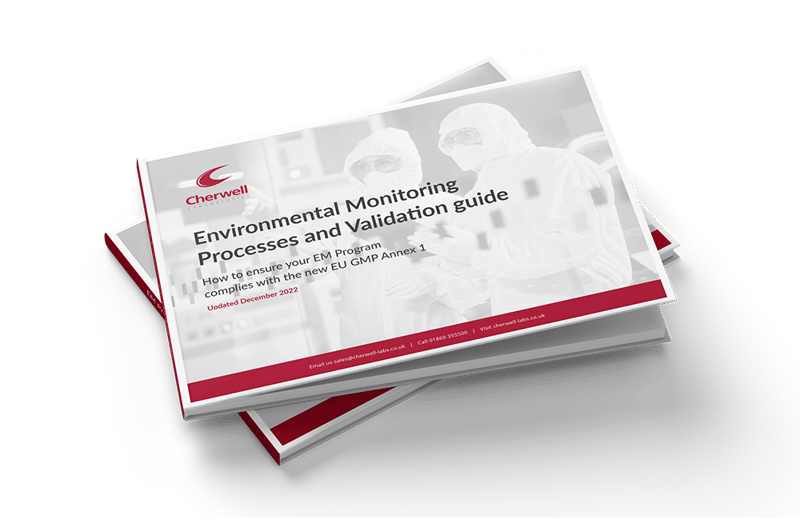Cherwell's Journey from Glass to Plastic Bottles
- Sustainable innovation: Cherwell develops plastic bottle alternative to glass, significantly reducing recycling energy requirements
- Cost benefits of plastic bottles: Cherwell's plastic bottles reduce breakage risk, wastage, and impact of transportation
- Enhanced usability: bottles' square shape and GL-45 compatible opening improve handling, storage efficiency, and simplify sterility tests
- Positive test results: Drop test demonstrates plastic bottles' robustness
- Sterilisation challenges overcome: Cherwell invests in new autoclave capacity to ensure plastic bottles maintain integrity and meet sterilisation standards
"Can we do this in plastic?"
In the ever-evolving landscape of sterile pharmaceutical manufacturing, innovation is the key to sustainability and efficiency. At Cherwell, we pride ourselves on our commitment to meeting the needs of our customers.
One such journey began with a simple question posed to one of our distribution partners in Denmark: "Can you get this product in a plastic bottle?”
The catalyst for change came from Cherwell distributor for Denmark and Sweden, Dorte Egelund, representing one of Denmark's leading pharmaceutical companies. They faced a two-fold challenge: address sustainability concerns while improving the ergonomics of their packaging.
Traditionally, the company used 500ml glass bottles. Although a known format that fit existing processes, glass bottles nonetheless posed significant recycling challenges, due to the energy-intensive process of melting glass for recycling: while glass requires a temperature of 800-900 degrees Celsius for melting, plastic requires only 200-300 degrees. These lower temperatures clearly make plastic a more sustainable choice, despite general perceptions that glass is more environmentally-friendly than plastic.
Collaborating closely with its partners, Cherwell thus embarked upon a journey to develop a sustainable alternative to glass bottles, with a more eco-friendly plastic presentation. And with Cherwell's commitment to innovation and sustainability, we not only introduced plastic bottles, but also ventured into uncharted territory by offering a 1-litre volume for the first time.
The transition from glass to plastic was not without its challenges, however.
Additional benefits of Cherwell's plastic bottle innovation
One major hurdle was ensuring that the plastic bottles could withstand the rigours of sterilisation in Cherwell's autoclaves. During initial tests, autoclaving caused the plastic bottles to collapse. There were also commercial factors to overcome: due to the size of the bottles, autoclave capacity was reduced to uneconomical levels.
Cherwell's dedication to quality, innovation, sustainability and addressing customers' needs led to investment in new autoclave capacity. Investment and internal collaboration ensured that the bottles maintained their integrity while meeting stringent sterilisation standards, as well as addressing reduced autoclave capacity arising from the 1-litre format.
Another key consideration was the design of the plastic bottles. The square form factor of Cherwell's plastic bottles enables easier handling for operatives, and maximises storage efficiency by optimising shelf space. The bottle's wide, GL-45 compatible opening also enables ease of use and simplifies sterility tests – a significant advantage for people using these bottles in the pharmaceutical industry. Plastic bottles are a lighter, more robust solution than glass, significantly reducing the wastage, risk and cost associated with breakages.
Cherwell conducted a drop-test of one of its plastic bottles to demonstrate its resistance to damage. A 1-litre bottle was filled with 900ml of tea to simulate a typical broth fill volume. This was then dropped onto tarmac three times from a height of 1.5 meters. Following the test, the plastic bottle showed only minor signs of damage, with a few scratches and a minor dent in one corner; the bottle remained viable, and its contents unaffected. Obviously, dropping a glass bottle would have led to very different results!

Plastic bottles' lighter weight compared with glass also has positive knock-on effects, potentially reducing transportation costs, as well as the environmental impact of shipping.
Cherwell's plastic bottles: delivering results fit for purpose
Cherwell's plastic bottles have found widespread acceptance among customers. Available in 250ml and 1-litre capacities, they provide a more sustainable, cost-effective solution suitable for diverse needs. They raise standards of sustainability, with the potential to reduce costs incurred through accidental breakages, without compromising on quality or performance.
Cherwell's plastic bottle development journey demonstrates the power of collaboration and innovation in driving positive change within the pharmaceutical industry. Cherwell's plastic bottles represent more than just a product: they embody the company's core values of working in reliable, adaptable partnership with industry partners to meet customers' needs in this ever-changing landscape.
By embracing change and challenging the status quo, Cherwell is paving the way for a brighter, more sustainable future, redefining the standards of those products and services that underpin sterile pharmaceutical manufacturing.
To see a video of the plastic bottle development story, featuring Emma Millburn, Cherwell's Director of Sales and Marketing, and Dorte Egelund of Dorte Egelund ApS, visit our bottled media products page.







